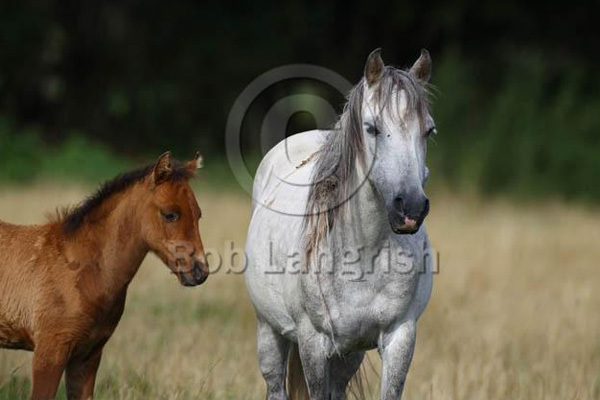The results of this study revealed that the pattern of corpus luteum formation and its changes in size and the plasma progesterone levels during the estrus cycle in this breed follow a pattern similar to that of other equine breeds.
Article in Reproduction Fertility and Development 17(2):252-253 · December 2004
Faramarz Gharagozlou ,University of Tehran
Abolfazl Shirazi
Abstract
Reproductive characteristics of the Caspian miniature horse have some similarities to other equine breeds, but several differences such as follicular wave pattern, multiple ovulations, and the size of ovulatory follicle have been reported. Still there are some other characteristics to be determined.
This study was carried out to investigate ultrasonic and hormonal changes of the Caspian mares during estrus cycle. Eleven clinically healthy and cycling Caspian mares, aged 3–17 years and weighing 159–236 kg L.W., were used from April to July. Using an ultrasound scanner equipped with a 5-MHz, B-mode, linear array rectal transducer, formation of the corpus luteum was observed from Day 0 (day of ovulation), and changes in plasma progesterone were investigated by daily blood collection and assay by means of an RIA method. Repeated measure ANOVA test was used for statistical analysis. The maximum size of the corpus luteum was seen at Day 3 postovulation (36.6 ± 1.91 mm), and remained up to 10 days after ovulation. At Days 10–11 a significant decrease in size was observed; thereafter gradual regression occurred and minimum size was reached by Days 16–17 (17.3 ± 1.46 and 16.9 ± 1.20 mm, respectively). The first significant increase in progesterone level was detected 24 h after ovulation and average high values of 8 ng/mL by Day 4 after ovulation. The average peak value of progesterone was detected on Days 7 to 10 of the cycle (11.6 ± 1.37 ng/mL) and remained so until Day 12. The lowest plasma progesterone concentration (less than 1 ng/mL) was observed from Day 14 till one day postovulation, coinciding with the CL regression found in sonographic observations.
The results of this study revealed that the pattern of corpus luteum formation and Its changes in size and the plasma progesterone levels during the estrus cycle in this breed follow a pattern similar to that of other equine breeds.

